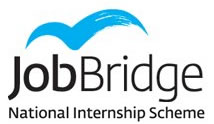by Alan Jacques

The interns have been assigned to various departments in the local authority including Archives; Environment; Health and Safety; City of Culture; IT; Housing; Smarter Travel; Laboratory; Economic Development; Museum Arts; Learning Hub Limerick; Ormston House; Limerick Craft Hub and EV+A.

- External Walls: Up to €8,000 Grant
- Attic: Up to €1,500 Grant
- Cavity Walls: Up to €1,700 Grant
- Internal Dry Lining: Up to €4,500 Grant
Maurice Quinlivan, who is Sinn Féin party leader on the council, maintains the JobBridge scheme has already reduced the number of real job opportunities available in the local authority. He warns if it is not closed down now, then thousands of new paid entry level positions that should come into being in the months and years ahead, will emerge as unpaid internships instead.
“In June 2011 the government introduced the JobBridge scheme and it has become the central plank of their jobs strategy. Although some individuals may have had a positive experience, it is a scheme which leaves thousands of jobseekers vulnerable to exploitation,” he claimed.
“Sinn Féin’s policy is to replace the one-size-fits-all JobBridge scheme with a new participant centred model for internships. One that envisages a substantial increase in the range of apprenticeships available. The model we propose would not displace apprenticeships, paid in-work training or jobs. It would afford those genuinely in need of some work experience with meaningful learning opportunities,” he explained.
Meanwhile, Fine Gael councillor Maria Byrne has welcomed the latest Live Register figures from the Central Statistics Office (CSO) showing the unemployment rate to have dropped below 10 per cent to 9.8 per cent — the lowest rate since the boom. The CSO has confirmed that, on a seasonally adjusted basis, an additional 104,600 jobs have been created since 2012.
“In 2012, a target of creating 100,000 new jobs by 2016 was set, which was thought to be very ambitious at that time. Today, the CSO This is really positive news,” said Cllr Byrne.
The City West representative believes that reducing unemployment from ten to five per cent will be twice as difficult as cutting it from 15 to ten per cent.
“We need to go on creating 40,000 new jobs every year for the next few years in order to reach sustainable full employment. When we reach the target of 2.1 million jobs by 2018, we will have replaced all the jobs lost during the recession with new more sustainable jobs.”
However, her optimism wasn’t shared by Cllr Quinlivan who said that we didn’t know if these people secured employment, emigrated, took up training or were simply cut off from their payments. “We also don’t know how many were forced onto the Gateway scheme or into JobBridge positions,” he said.
“The employment decrease is matched by the drop of the number of people in the labour force. There are now 151,600 fewer people under the age of 34 in the labour force. The vast majority have left Ireland to find not only work, but decent work with decent pay and a chance of career progression. A number have also left in order to achieve a better standard of living, where public services are properly funded and not pared back to the bare minimum”, he added.

